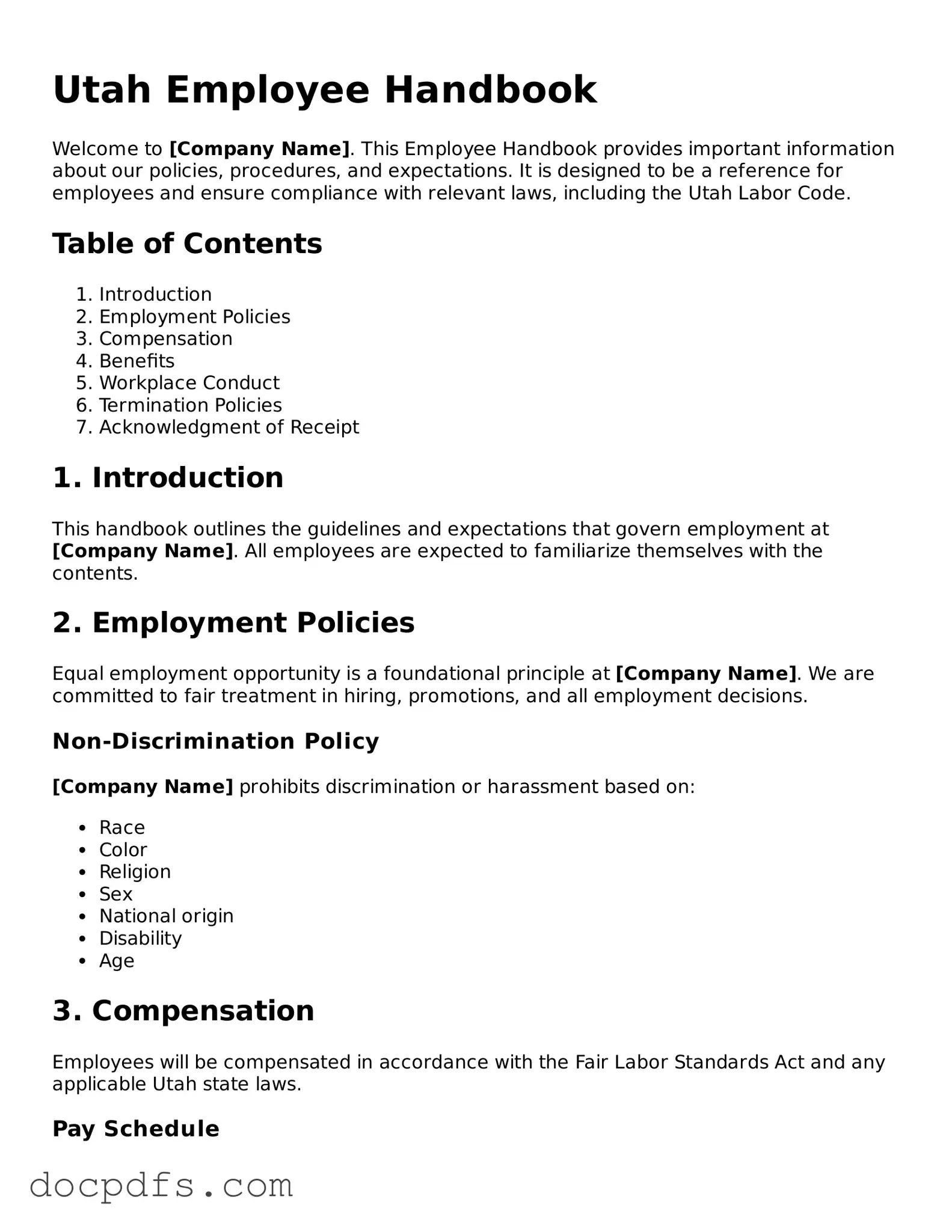The Utah Employee Handbook form serves as a comprehensive guide for employees regarding company policies, procedures, and expectations. It outlines important information that employees need to understand their rights and responsibilities within the workplace. This document aims to promote a positive work environment and ensure compliance with state and federal laws.
Who should receive a copy of the Employee Handbook?
Every employee should receive a copy of the Employee Handbook upon hire. This includes full-time, part-time, and temporary employees. Additionally, it is advisable for managers and supervisors to familiarize themselves with the handbook to effectively communicate policies to their teams.
How often should the Employee Handbook be updated?
The Employee Handbook should be reviewed and updated regularly, at least once a year or whenever there are significant changes in company policies or applicable laws. Keeping the handbook current ensures that employees have access to the most relevant information.
What should I do if I have questions about the Employee Handbook?
If you have questions regarding the Employee Handbook, you should reach out to your supervisor or the Human Resources department. They can provide clarification on specific policies and address any concerns you may have.
Is it mandatory for employees to sign an acknowledgment of receipt of the Employee Handbook?
Yes, it is generally recommended that employees sign an acknowledgment form confirming they have received and read the Employee Handbook. This acknowledgment helps to ensure that employees understand the policies and can serve as a reference for future discussions.
Can the policies in the Employee Handbook change?
Yes, the policies outlined in the Employee Handbook can change. Employers reserve the right to modify, add, or remove policies as needed. Employees should be informed of any changes and provided with an updated copy of the handbook.
What happens if an employee violates a policy in the Employee Handbook?
If an employee violates a policy outlined in the Employee Handbook, disciplinary action may be taken. This could range from a verbal warning to termination, depending on the severity of the violation and the company’s disciplinary procedures.
Are there specific laws that the Employee Handbook must comply with in Utah?
Yes, the Employee Handbook must comply with both federal and state laws. This includes regulations related to workplace safety, anti-discrimination, wage and hour laws, and employee rights. Employers should consult legal professionals to ensure compliance.
What should I do if I believe a policy in the Employee Handbook is unfair?
If you believe a policy in the Employee Handbook is unfair, it is important to voice your concerns. You may discuss your feelings with your supervisor or Human Resources. They can provide guidance on how to address the issue and may consider your feedback for future revisions of the handbook.
